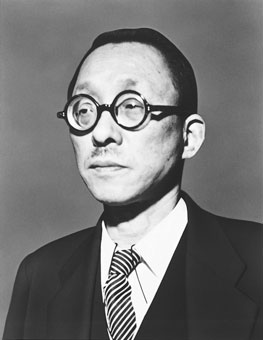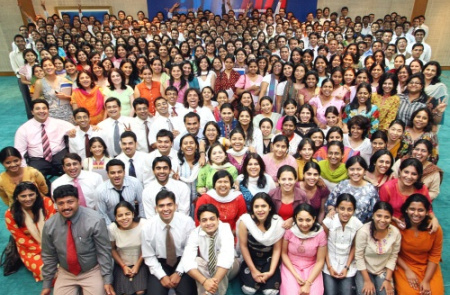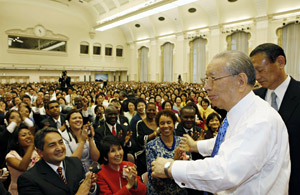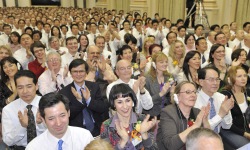Most non-Buddhists who have heard of Soka Gakkai International (SGI) know it as Buddhism for the stars. If you saw the Tina Turner bio-flick “What’s Love Got to Do With It?” you saw a dramatization of Turner’s introduction to Soka Gakkai in the late 1970s. Other well-known members include Hollywood actor Orlando Bloom; musicians Herbie Hancock and Wayne Shorter,Bollywood actors Shweta Kawatra, Tisca Chopra, Manav Goyel & many others.
From its origin in pre-war Japan, Soka Gakkai has promoted personal empowerment and humanist philosophy combined with Buddhist devotion and practice. Yet as its membership grew in the West, the organization found itself struggling with dissension, controversy, and accusations of being a cult.
Origin of Soka Gakkai
The first incarnation of Soka Gakkai, called Soka Kyoiku Gakkai (“Value-Creating Education Society”), was founded in Japan in 1930 by Tsunesaburo Makiguchi (1871-1944), an author and educator. Soka Kyoiku Gakkai was a lay organization dedicated to humanistic education reform that also embodied the religious teachings of Nichiren Daishonin.
During the 1930s the military took control of the Japanese government, and a climate of militant nationalism gripped Japan. The government demanded that patriotic citizens honor the Japanese indigenous religion, Shinto. Makiguchi and his close associate Josei Toda (1900-1958) refused to participate in Shinto rituals and worship, and they were arrested as “thought criminals” in 1943. Makiguchi died in prison in 1944.

After the war and his release from prison, Toda re-formed Soka Kyoiku Gakkai into Soka Gakkai (“Value-Creating Society”) and shifted the focus from education reform to the promotion of Nichiren Buddhism. In the post-war era, many Japanese were attracted to Soka Gakkai because of its emphasis on self-empowerment through socially engaged Buddhism.

Soka Gakkai International
In 1960, Daisaku Ikeda, then 32 years old, became president of Soka Gakkai. In 1975 Ikeda expanded the organization into Soka Gakkai International (SGI), which today has affiliate organizations in 190 countries.

Is SGI a Cult?
Over the last two years this author had the opportunity to meet many SGI members. They don’t seem to fit the Marcia Rudin checklist, a founding dir.of International Cult education prog. For example, SGI members are not isolated from the non-SGI world. They are not anti-woman, anti-child, or anti-family. They are not waiting for the Apocalypse!! There is no evidence that they use deceptive tactics to recruit new members. Claims that SGI is bent on world domination are, I suspect, a tad exaggerated.




Basic SGI belief
The basic philosophy lies in the belief that by chanting ‘Nam-myoho-renge-kyo’ with confidence in our innate Buddhahood – our inherent highest potential – we attune our lives to the perfect rhythm of the universe.
The result is increased life force, wisdom, compassion and good fortune to face the challenges in front of us.
Through chanting, studying Buddhist philosophy and taking action each day for the well-being of ourselves and others, we can establish a state of profound happiness and make each moment of our lives joyful and meaningful while contributing to our families, communities and society

Sokka Gakkai Practice
As a first step in the faith members engage in daily daimoku, which is chanting the phrase Nam Myoho Renge Kyo, meaning “Devotion to the Mystic Law of the Lotus Sutra.” They also practice gongyo, which is reciting some part of the Lotus Sutra.
These practices are said to work an inner transformation, bringing one’s life into harmony and evoking wisdom and compassion. At the same time, SGI members take action on behalf of others, actualizing Buddha-nature in the world.
Each of the characters of Nam-myoho-renge-kyo contain extremely profound principles of life and together they express how everything in the cosmos works in one harmonious relationship.
Nam – This Sanskrit word means “to devote one-self”. It indicates the elements of action and attitude.
Myoho – Literally means the ‘Mystic Law’. Myo means to open, to be fully endowed and to revive. Ho is the Dharma or Law.They are also identified by Nichiren as corresponding to life and death.
Renge – Means the Lotus flower. The lotus blooms & produces seeds at the same time, and represents the simultaneity of cause and effect.The circumstances and the quality of our individual lives are determined by the causes and effects, both good and bad, that we accumulate (through our thoughts, words and actions) at each moment. This is called ‘Karma’. The law of cause and effect explains that we each have personal responsibility for our own destiny.
The lotus flower grows and blooms in a muddy pond, and yet remains pure and free from defilement, representing the reemergence of Buddhahood from within the life of an ordinary person.
It symbolizes winning in life despite adverse circumstances, maintaining one;s purity amidst the muddy water of the world.
Kyo – means the Sutra, the voice or teaching of a Buddha. In this sense it also means sound, rhythm or vibration.In a broad sense, kyo conveys the concept that all things in the universe are a manifestation of the mystic law.
They believe that the inherent power in the characters Nam-myoho-renge-kyo is limitless. However, it is one’s sincere efforts in practice that determine the extent of benefits one gains. The most important point to remember is that those who chant Nam-myoho-renge-kyo can draw forth their state of Buddhahood which influences all other states in one’s life & guides the daily actions.
Their object of devotion is the “Gohonzon” In Japanese ‘go’ means worthy of honour and ‘honzon’ means object of fundamental respect. It is a paper scroll on which Chinese and Sanskrit characters are inscribed. The charcters represent life in all aspects. Down the centre of the Gohonzon are the words “Nam-myoho-renge-kyo” written.
The practitioners believe in the principle of setting goals & experiencing benefits. They believe that by setting goals they can focus more on their prayers. Also, they believe in the power of actual proof.
The members who belong to different segment of society meet in regular intervals. These meetings are considered to be joyous , filled with songs, concepts & experience sharing.

Kosen-rufu
The phrase kosen-rufu appears frequently in SGI literature. Roughly, it means to propagate peace. Kosen-rufu is the dissemination of Buddhism, peace and harmony in the world. Soka gakkai practice is intended to bring empowerment and peace into the lives of individuals, who can then spread that empowerment and peace to the world.
Today SGI actively reaches out to work with others on humanitarian and environmental projects. In recent years SGI has been especially supportive of the United Nations, where it is represented as an NGO (Non-Governmental Organization). The idea seems to be that nurturing understanding and good will through humanitarian work will allow kosen-rufu to manifest naturally.
Daisaku Ikeda said, “Simply put, kosen-rufu is the movement to communicate the ultimate way to happiness —- to communicate the highest principle of peace to people of all classes and nations through the correct philosophy and teaching of Nichiren.”

Bharat Sokka Gakkai
Bharat Soka Gakkai (BSG) is the Indian affiliate of the Soka Gakkai International (SGI), a global association of grassroots organisations that seeks to promote the values of peace and respect for all people.
Established as a registered society in January 1986, and working in consonance with the guiding principles of the SGI, BSG too has sought to create an environment of peace through cultural, educational and community-related activities. What sets these initiatives apart is the humanistic spirit of ‘reaching out’ through ‘heart-to-heart’ dialogue, as practised by the founding president of SGI, Dr Daisaku Ikeda.
In India,you can reach them at [email protected]
Also,to understand the immense benefit of this philosophy you can read the real life experiences in the following url: http://www.gakkaionline.net/Experiences/PubsMyself.html




Shakyamuni Buddha and Nichiren Daishonin are turning in their stupa and grave, respectively.
I’ve recently started a blog, the information you provide on this site has helped me tremendously. Thank you for all of your time & work.